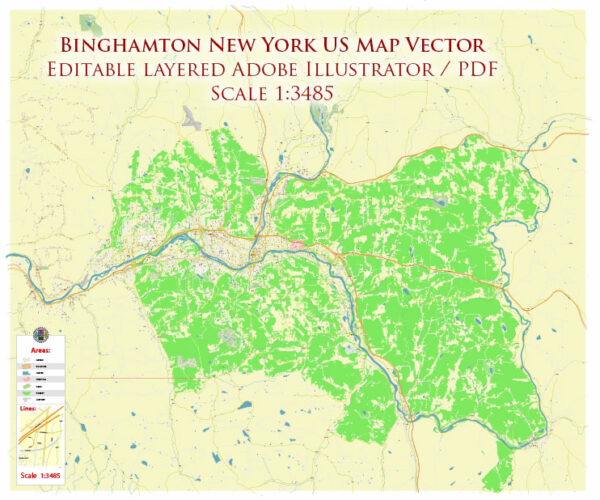Binghamton, New York, has a rich history that reflects the broader historical trends and developments in the United States. Here is a brief overview of the city’s history:
- Early Settlement: The area that would become Binghamton was originally inhabited by Native American tribes, including the Susquehannocks. European settlers arrived in the late 18th century, and the town of Binghamton was officially established in 1807.
- Industrialization: Binghamton’s growth was significantly influenced by its location along the Susquehanna River, which provided water power for industry. During the 19th century, the city became a center for manufacturing, with industries like cigar production, shoe manufacturing, and the E. Howard Watch Company. The presence of the Erie Railroad in the mid-19th century further boosted the city’s industrial and commercial activities.
- Civil War: Binghamton played a role in the American Civil War as a transportation hub and a place of recruitment and training for Union soldiers. Camp Susquehanna, a military training facility, was established in the area.
- Economic Diversification: As the 20th century progressed, Binghamton’s economy diversified. IBM established a major presence in the city, becoming one of its largest employers and contributing to the region’s reputation as the “Valley of Opportunity.” Binghamton also developed a strong healthcare sector with institutions like the Lourdes Hospital and United Health Services.
- Cultural and Educational Growth: Binghamton is home to several educational institutions, including Binghamton University, which is part of the State University of New York (SUNY) system. The city has a vibrant cultural scene with museums, theaters, and music venues.
- Post-Industrial Challenges: Like many other industrial cities, Binghamton faced challenges in the latter half of the 20th century as deindustrialization took its toll on the local economy. The city saw a decline in manufacturing jobs, leading to economic restructuring and urban renewal efforts.
- Revitalization Efforts: In recent years, Binghamton has been working on revitalizing its downtown area and waterfront. This includes the development of the Binghamton University Downtown Center and the Chenango Street Historic District. The city has also seen a resurgence in its arts and cultural community.
- Binghamton Today: Binghamton remains a regional center for education, healthcare, and business. Its diverse population contributes to its cultural richness, and it continues to evolve and adapt to changing economic and societal trends.
Binghamton, New York’s history reflects the broader American narrative of industrialization, economic diversification, and the challenges and opportunities faced by cities in the 20th and 21st centuries. Today, it is a city with a mix of historical charm and modern amenities, offering a diverse range of opportunities and experiences for its residents and visitors.


 Author: Kirill Shrayber, Ph.D.
Author: Kirill Shrayber, Ph.D.